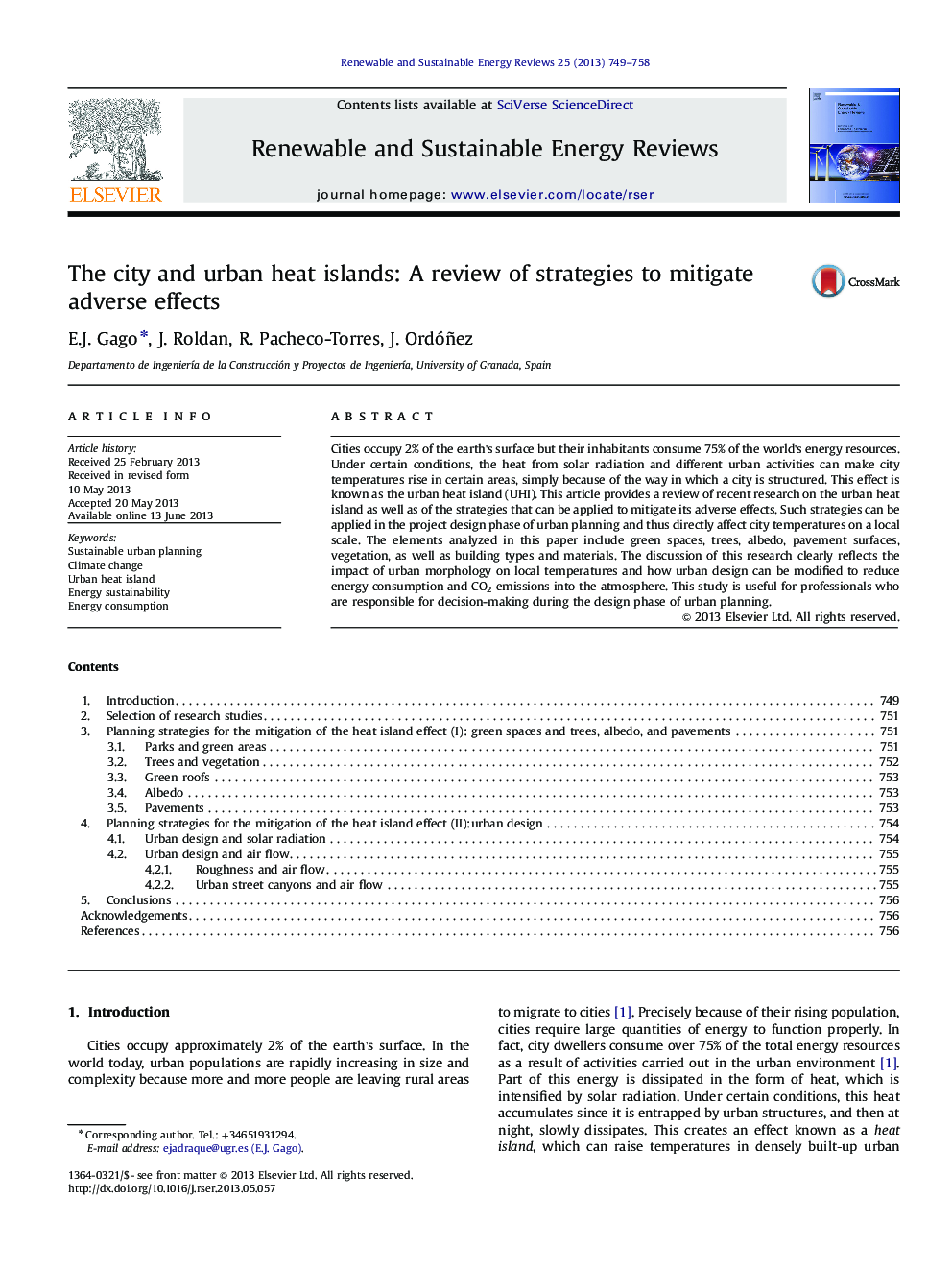| Article ID | Journal | Published Year | Pages | File Type |
|---|---|---|---|---|
| 8121851 | Renewable and Sustainable Energy Reviews | 2013 | 10 Pages |
Abstract
Cities occupy 2% of the earth's surface but their inhabitants consume 75% of the world's energy resources. Under certain conditions, the heat from solar radiation and different urban activities can make city temperatures rise in certain areas, simply because of the way in which a city is structured. This effect is known as the urban heat island (UHI). This article provides a review of recent research on the urban heat island as well as of the strategies that can be applied to mitigate its adverse effects. Such strategies can be applied in the project design phase of urban planning and thus directly affect city temperatures on a local scale. The elements analyzed in this paper include green spaces, trees, albedo, pavement surfaces, vegetation, as well as building types and materials. The discussion of this research clearly reflects the impact of urban morphology on local temperatures and how urban design can be modified to reduce energy consumption and CO2 emissions into the atmosphere. This study is useful for professionals who are responsible for decision-making during the design phase of urban planning.
Keywords
Related Topics
Physical Sciences and Engineering
Energy
Renewable Energy, Sustainability and the Environment
Authors
E.J. Gago, J. Roldan, R. Pacheco-Torres, J. Ordóñez,
